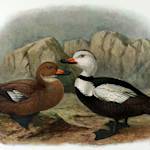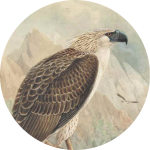Extinct In The Wild, Micronesian Kingfisher
1986 • Guam, Pohnpei & Palau
"Micronesian Kingfishers flourished in Guam's limestone forests and coconut plantations until the arrival of the brown tree snake, an invasive species that stowed away in military equipment shipped from New Guinea after World War II. Because these reptiles had no natural predators on Guam, their numbers grew and they spread across the island quickly. Within three decades, they had hunted Micronesian Kingfishers and eight other bird species to the brink of extinction. In 1984, Guam's Department of Aquatic and Wildlife Resources captured the country's remaining 29 Micronesian Kingfishers and sent them to zoological institutions around the globe... The Association of Zoos and Aquariums created a Species Survival Plan (SSP) for the birds." In 2014 the Smithsonian Conservation Biology Institute hatched a chick, the first offspring for its 8-year-old father and 2-year-old mother. That hatchling brought the total population of Micronesian Kingfishers to 129 birds.
"Endangered Micronesian Kingfisher Hatches." ZooBorns. 28 Jan. 2014.
Dw_ross. Micronesian Kingfisher (Todirhamphus Cinnamominus). 20 Jan. 2011. <https://commons.wikimedia.org/wiki/File:Micronesian_Kingfisher_1644.jpg>.


Learn about Maya Lin’s fifth and final memorial: a multi-platform science based artwork that presents an ecological history of our world - past, present, and future.

Discover ecological histories and stories of former abundance, loss, and recovery on the map of memory.

Learn how we can reduce our emissions and protect and restore species and habitats – around the world.

See how art can help us rethink the problems we face, and give us hope that each one of us can make a difference.

Help make a global memorial something personal and close to home. Share your stories of the natural world.


